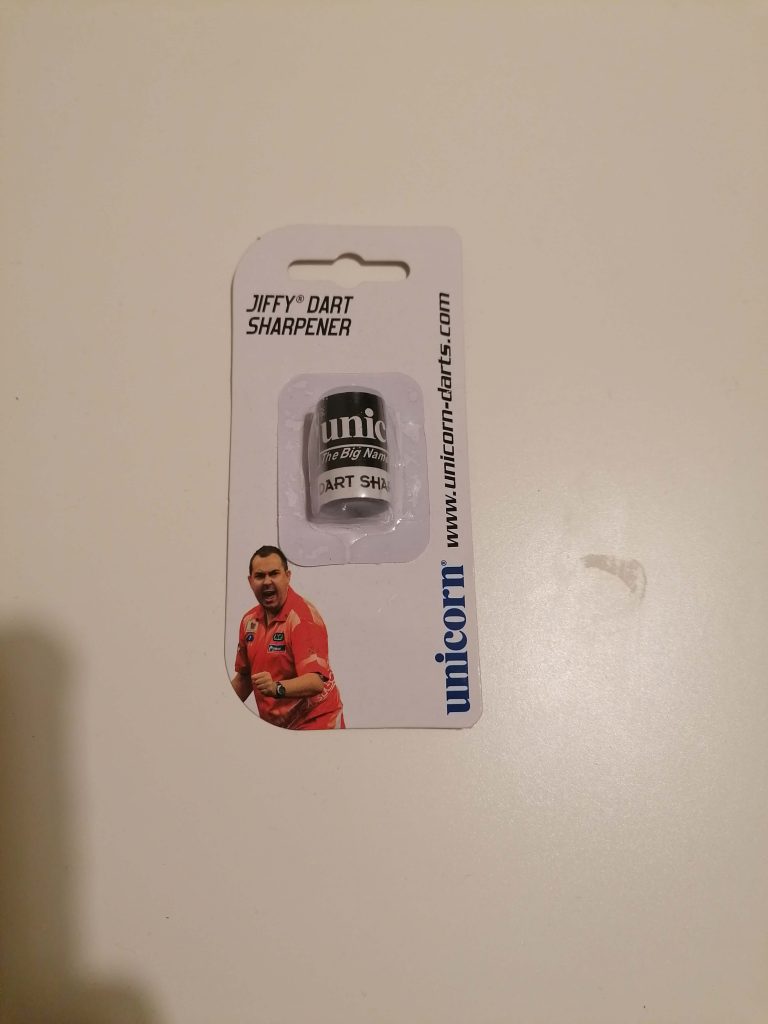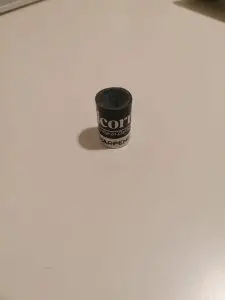Darts not sticking in the board?
Unfortunately, this is very common for players new to darts, and even more experienced players will come across this issue from time to time. As darts are an individual sport and incredibly competitive, losing a dart due to a bounce out could be the difference between winning and losing a game.
So, if your darts keep falling out of the board read on – we’ll cover why this is happening (as there are some guaranteed issues you can troubleshoot), and then, more importantly, we’ll show you how to keep darts in the board.
Why Do Your Darts Keep Falling Out of the Board?
Before trying to solve this issue, it’s important to know why your darts keep falling out of the board as there could be a number of reasons for this. In our experience, there are three reasons why your darts keep falling out of the board:
- The dartboard is too hard
- Your darts need sharpening or are too light
- Your throw doesn’t have enough force
The first two are equipment/product related so are a bit easier to troubleshoot while the third reason is down to your individual darts technique. This one is a bit harder to troubleshoot as the throwing technique is specific to each individual, while there are general recommendations, there isn’t an exact blueprint for the perfect throw.
We’ll look at each of these causes in more detail as the likelihood is your darts won’t stick in the board for one of the following reasons.
1. Dartboard Is Too Hard
The first reason why your darts keep falling out of the board could be because your dartboard is too hard or has damaged bristle fibers that won’t hold the dart in place in certain areas of the board.
Dartboard maintenance is a crucial aspect of the game but one that few beginners realize when starting out. A good quality bristle dartboard can be subject to wear and tear – particularly through bristle damage which is one of the main things that leads to a dartboard bulging or swelling.
If your dartboard has been subject to moisture or been wet (a common issue that you shouldn’t do when cleaning a dartboard then the sisal fibers will soak up this moisture and harden as they dry. This will lead to stiffer bristles that are less flexible when the dart makes contact.
If your board is hard or has any areas where it’s bulging or swelling then this could be a key indicator as to why your darts won’t stick in the board. A good condition bristle board will easily hold a dart and won’t need much force at all for the fibers to move and hold the dart in place.
2. Blunt or Light Darts
If you’ve got a good condition dartboard, the next issue could be with the darts themselves. As with the dartboard, there are two noticeable issues that could result in your darts being the issue and that is either a dart that is too blunt or a dart that is too light.
The reason darts have an angled tip is so that upon contact with the bristles on a dartboard, the reduced and sharper angle will make it easier for the dart to pass between the fibers and be held in place. If, however, your darts are blunt due to bounce-outs or consistent and frequent play without sharpening your darts then this will impact how easily the dart will pass between the fibers.
A blunt dart has a wider surface area (though it’s not really noticeable to the eye at a glance) due to the rounded tip, this means it won’t penetrate the board as deeply once thrown and will be more susceptible to hitting the dartboard wires and bouncing out.
Further to this, the dart you are throwing with could also be too light. A lighter dart – of 16g or lighter – will need more force to penetrate the fibers upon contact with the board. The lighter the dart, the more difficult it will be to travel with the speed needed to hit the board with force and stay in place.
With all other factors being equal, a 12g dart is more likely to fall out of the board than a 22g dart. This doesn’t mean heavier darts are better but if your darts are on the incredibly light end of the scale, you may need to get a heavier set or adopt your throwing technique which leads us to our final issue…
3. Your Throw Doesn’t Have Enough Force
Your throwing technique may not be forceful enough for the dart to sufficiently penetrate the board and stay in place. Some people (especially beginners) will quite literally try to arc or loop their darts into the board. And inconsistent technique will also mean you can’t generate enough force to actually be accurate.
This isn’t a pro tip either, when I try to throw with my left hand I can either throw the dart with accuracy but lose a noticeable amount of power or try to throw it harder and lose accuracy. Being able to throw with power and accuracy is something that comes through improved motor pathways and repeated practice.
If your darts are falling out but you’re a relative beginner, it could be because your technique is not yet at a level where you can throw with enough power and accuracy for your dart to consistently stay on the board.
How to Make Sure Your Darts Stick in the Board
The above are the main reasons why your darts keep falling out of the board but as each person might have specific issues, I’ll now cover some steps that you can take to ensure your darts stay in the board each throw – remember, lost darts mean lost games!
Firstly, it’s important to keep your dartboard in good condition as no change you make will have any impact if your dartboard is the cause.
You’ll need to ensure that you rotate the dartboard regularly in order to make sure the playing surface has equal use throughout the board. This is the quickest win as most people will practice on the same numbers and this repeated use will damage the board very quickly.
Rotating the dartboard every two weeks will ensure you get equal wear and tear out of the entire board improving the longevity and performance at the same time. Next, you’ll want to keep the board in a cool, dry area and ensure it never gets wet.
Water will damage the sisal fibers on a bristle dartboard and will harden them or weaken the glue leading to the fibers falling out. Both will impact how a dart stays in the dartboard!
To clean a dartboard, simply with it down with a mildly damp cloth and wipe away any excess moisture straight away. You can lightly vacuum and dirt or debris before wiping it down but whatever you do, do not soak a bristle dartboard in water.
For darts, you’ll want to keep them sharpen as a blunt dart will often lead to more bounce-outs. For this, you can use a sharpening stone like the one pictured below or a dedicated darts sharpener.
For further reference, you can check out our quick guide on how to sharpen darts.
You’ll also want to scuff the dart point and give the boards fibers something to grip as the dart lands in the board. To do this, simply run over the dart point with sandpaper (100 – 150 grit) to minimize smoothness around the point.
Not only will a blunt tip find it difficult to penetrate the board but a smooth tip will also find it difficult to grip the board so scuffing your tip will help a significant amount with darts not sticking in the board.
Finally, you may need to alter your throwing technique. As a beginner, practice will help motor pathways which in turn will lead to more accuracy and power with your throw. You don’t need to throw darts with force as this could lead to a loss of accuracy but once you learn to throw consistently, the increased neurological connection between your brain and muscles will allow you to throw more accurately with an increase in power.
For a quick note, you might want to look at some common throwing issues that could be leading to a weak throw. One of the main ones in my opinion is allowing your elbow to drop during a release. This reduces power and also impacts the trajectory of the dart.
Final Thoughts
Having a dart keep falling out of the board is not only frustrating because of the lost points, but it can also lead to damaged equipment as your darts keep hitting the floor with force. Why is it then that your darts keep falling out of the board and won’t stick in?
Darts fall out of the dartboard when the dartboard is too hard or the darts are too blunt. Both of these factors prevent the dart from easily penetrating the bristle fibers of the board and make it more difficult for them to be held in place.
Other factors include the darts being too light or the throwing technique lacking in force.
Fortunately, there are some easy fixes for this issue. Properly maintaining your dartboard by rotating it regularly and keeping it free from any water will help to keep the bristles in good condition.
Similarly, sharpening your darts often will also make it easier for them to penetrate the bristles and go further into the board keeping them held in place more secure. If this doesn’t help, you might also want to check out our article on why darts bounce out and how to prevent it to see if this could be the particular issue that you’re facing.



